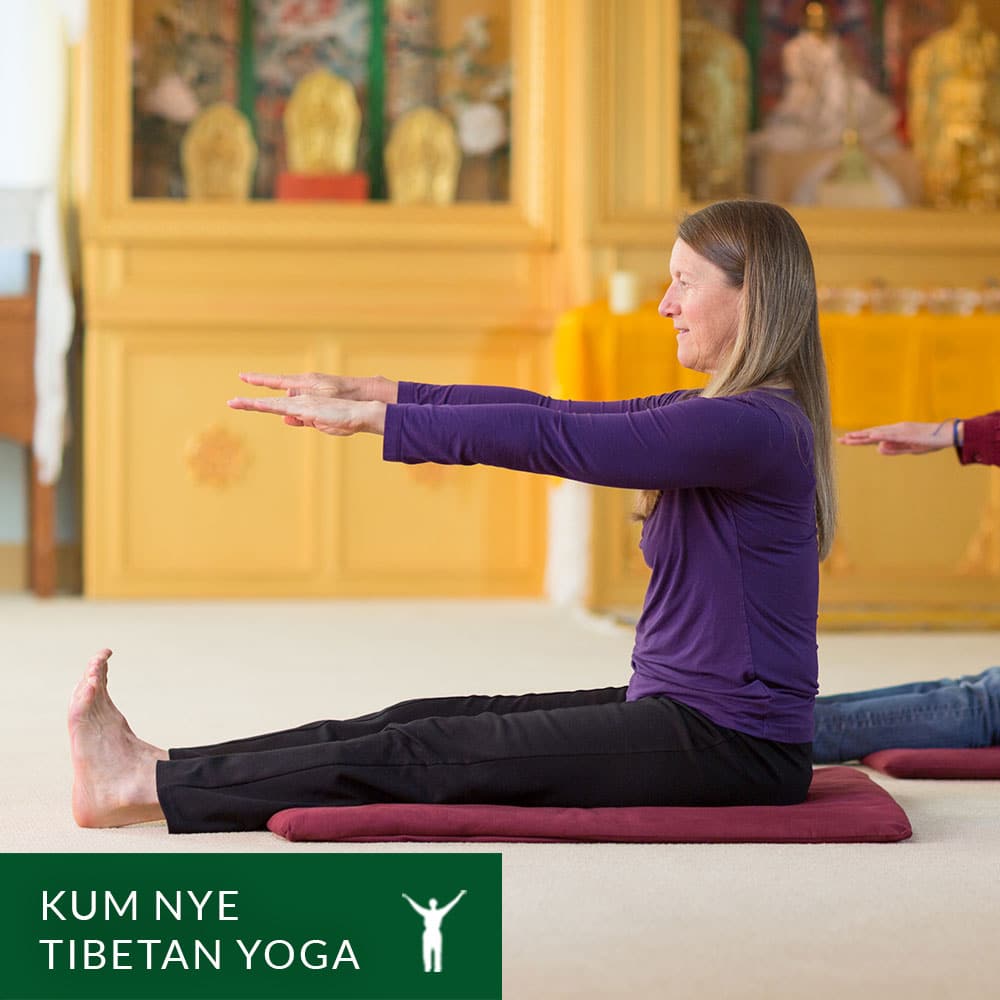Kum Nye Tibetan Yoga

Overview
Pronounced “koom nay,” this gentle massage and movement system heals body and mind by replenishing energy. Designed by founder Tarthang Tulku specifically to help Westerners release stress, Kum Nye promotes deep relaxation, so that students can ease naturally into meditative concentration. Based on Tibetan medicine and Buddhist body-mind disciplines, Kum Nye classes have been a popular and beloved resource for Nyingma students since the Institute’s founding.
History & Development
Kum Nye (Tibetan Yoga) is described in general terms in the Vinaya, where the Buddha suggests ways for monks to combat the effects of mental fatigue and physical weariness. Massage is among the methods mentioned. In Tibet, Kum Nye was developed both as a way of healing diseases that result from blockage of energy, and as a preliminary to advanced yogic practices. This system, however, was not well-known or systematized, and was not generally practiced in the monasteries. Even the oral tradition emphasized the aspects of breathing and massage rather than movement exercises.
Tarthang Tulku writes that, “In my own work in teaching Kum Nye, I found it helpful to emphasize these physical exercises, which were worked out in cooperation with colleagues from Western disciplines and through observation of students’ experience. These exercises have proven their worth through the years.”
Stages of Practice
For beginning students, the slow and gentle movements of Kum Nye offer a welcome experience of relaxation. Many people seek techniques to help resolve personal difficulties such as work-related stress, emotional conflicts, or a sense of being out of touch with the deeper current of their lives. Even a brief acquaintance with Kum Nye exercises can reduce stress and offer a host of additional benefits such as enhanced sensitivity to body and mind and a fuller self-understanding based on direct experience of emotions, thoughts, sensations, and feelings. As stress melts away, sensory awareness is reawakened, the urgent chatter of thoughts is stilled, and mind and body come into greater attunement.
Intermediate students find that the restful discipline of familiar Kum Nye exercises is a reliable antidote to mental and emotional stress as it rebalances body and mind to allow awareness to settle into a natural state where relaxation and insight arise as needed. As students become familiar with Kum Nye and learn to practice with patience and sensitivity, they can reliably select exercises which overcome specific physical problems, such as exercises that counteract stiffness and rigidity and promote muscle tone and circulation.
For advanced students, Kum Nye can work in concert with meditation practice and other studies to invigorate the body and invite deeper meditation experiences by loosening all types of physical and mental rigidity. In-depth practice of Kum Nye exercises leads to deeply grounded and alert states of mind.
Effects of Practice
Kum Nye and Nyingma Psychology programs work together to relieve symptoms of imbalance and encourage a closer look at their underlying causes. From a talk by Tarthang Tulku, winter of 1986:
“Over time, pressure and tension demoralize and damage the human spirit. Loss of confidence, reluctance to take responsibility, and the feeling of being pressured, even controlled, are warning signs that our human spirit is being subjected to a dictatorship of some kind. But no matter where we look, it is difficult to find the root cause of pressured, anxious feelings. While we can point to certain events that seem to ‘cause’ our tension, we forget to ask a more important question: Why do we allow such things to control us? If we had the knowledge to direct our lives more skillfully, we could develop more inner freedom and confidence.”
In the rush of our lives, thoughts, feelings, and sensations are relentlessly stimulated and agitated. With Kum Nye, we can learn to take care of ourselves, calm body and mind, and sort out our thoughts and feelings in a positive way.
Recommended Reading
- Get Involved
- Policies